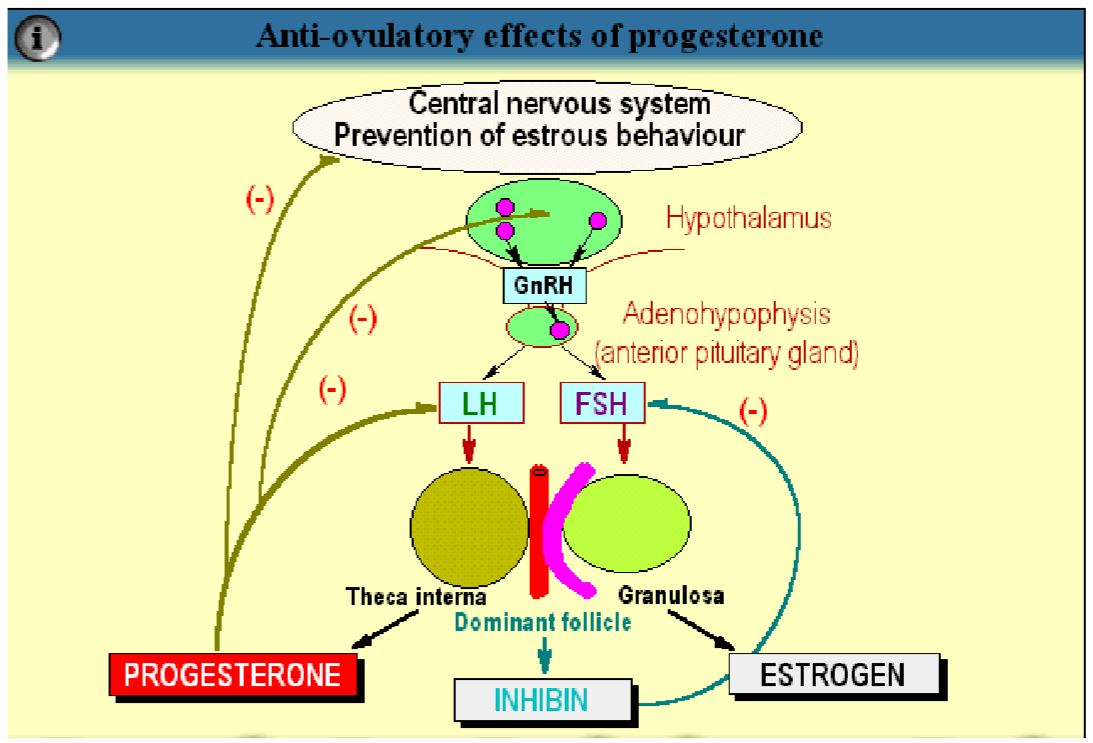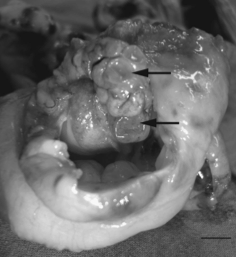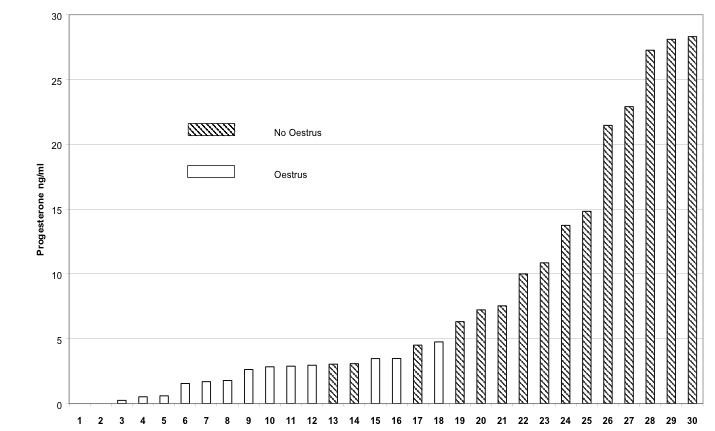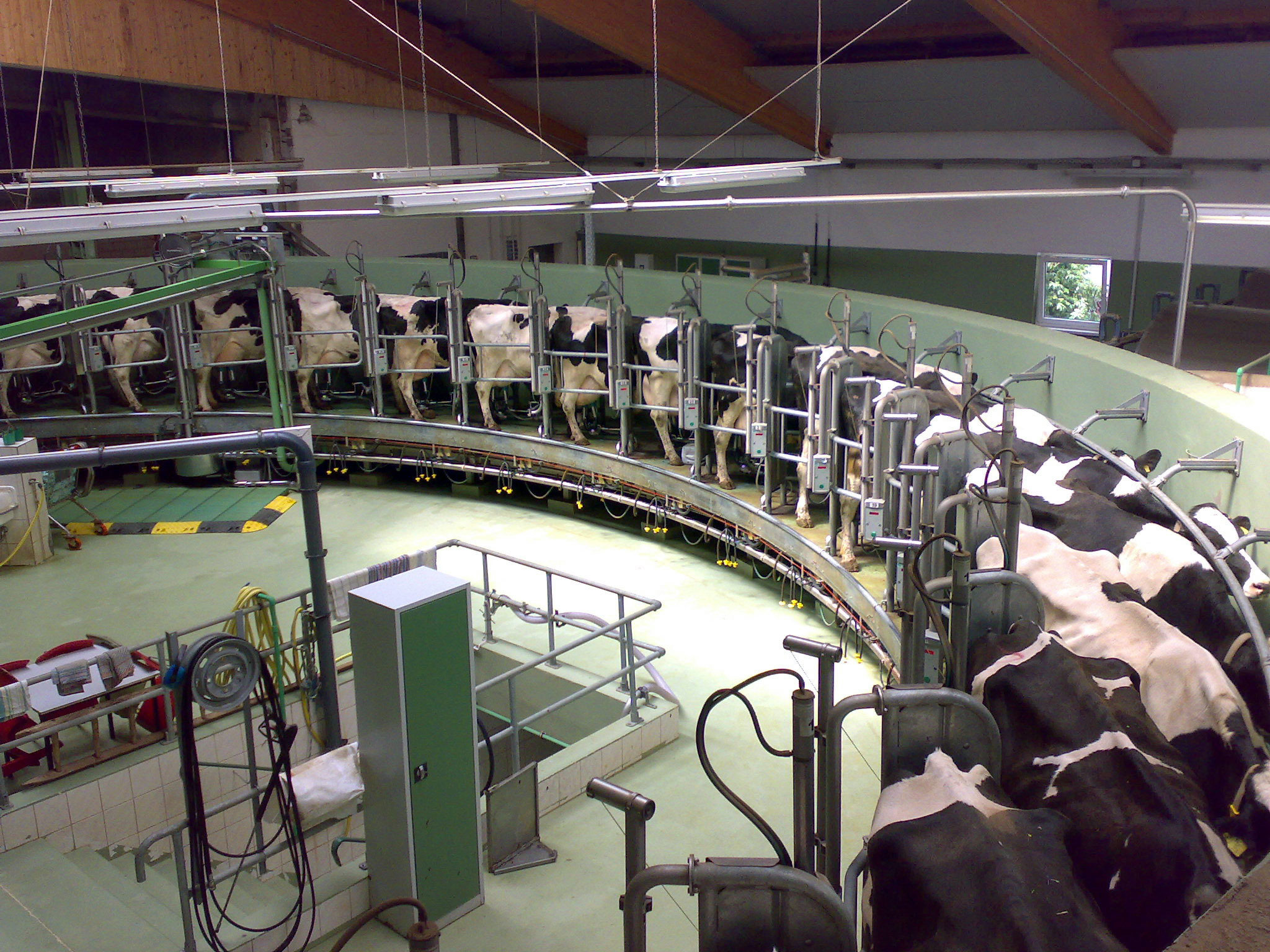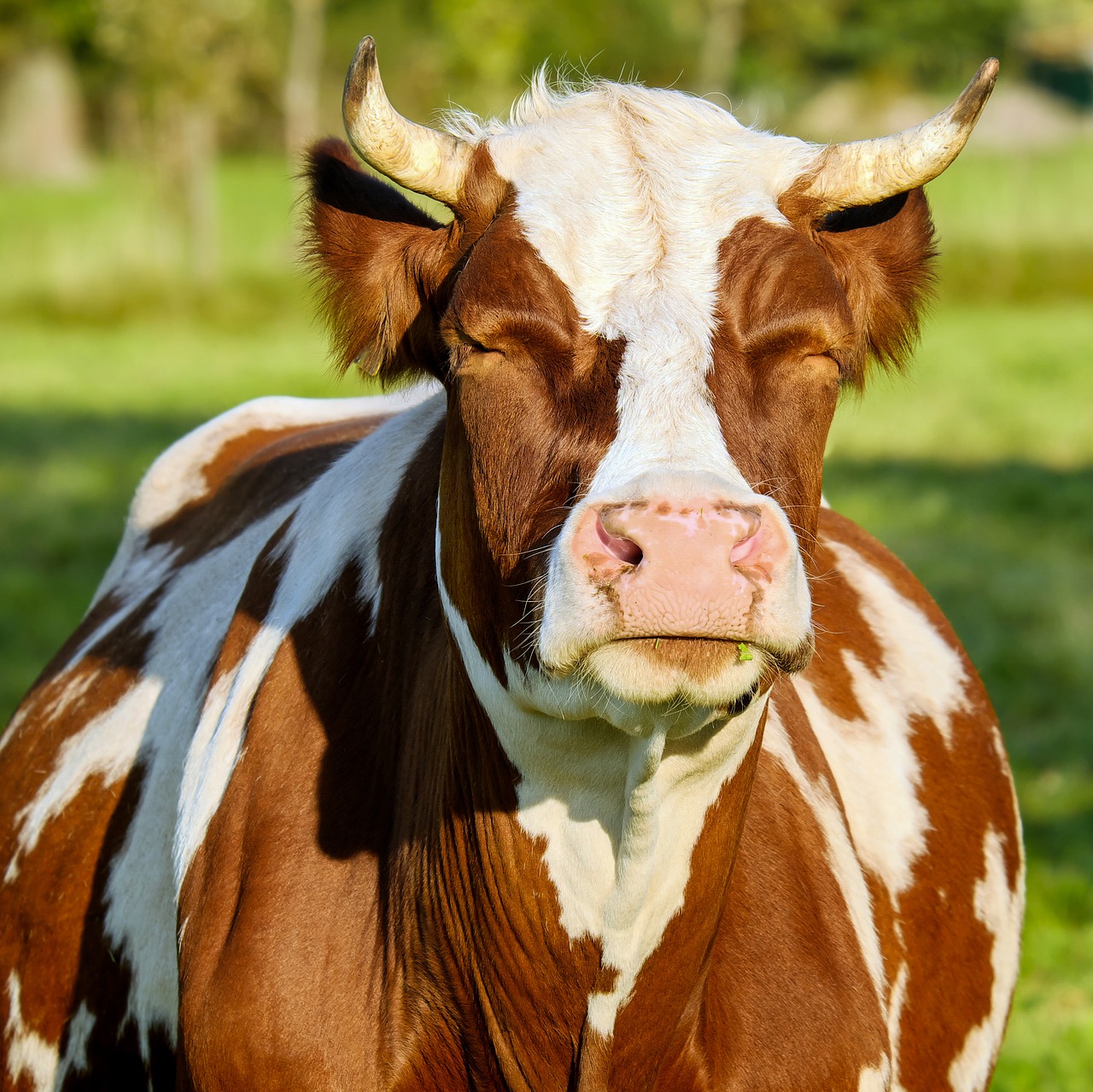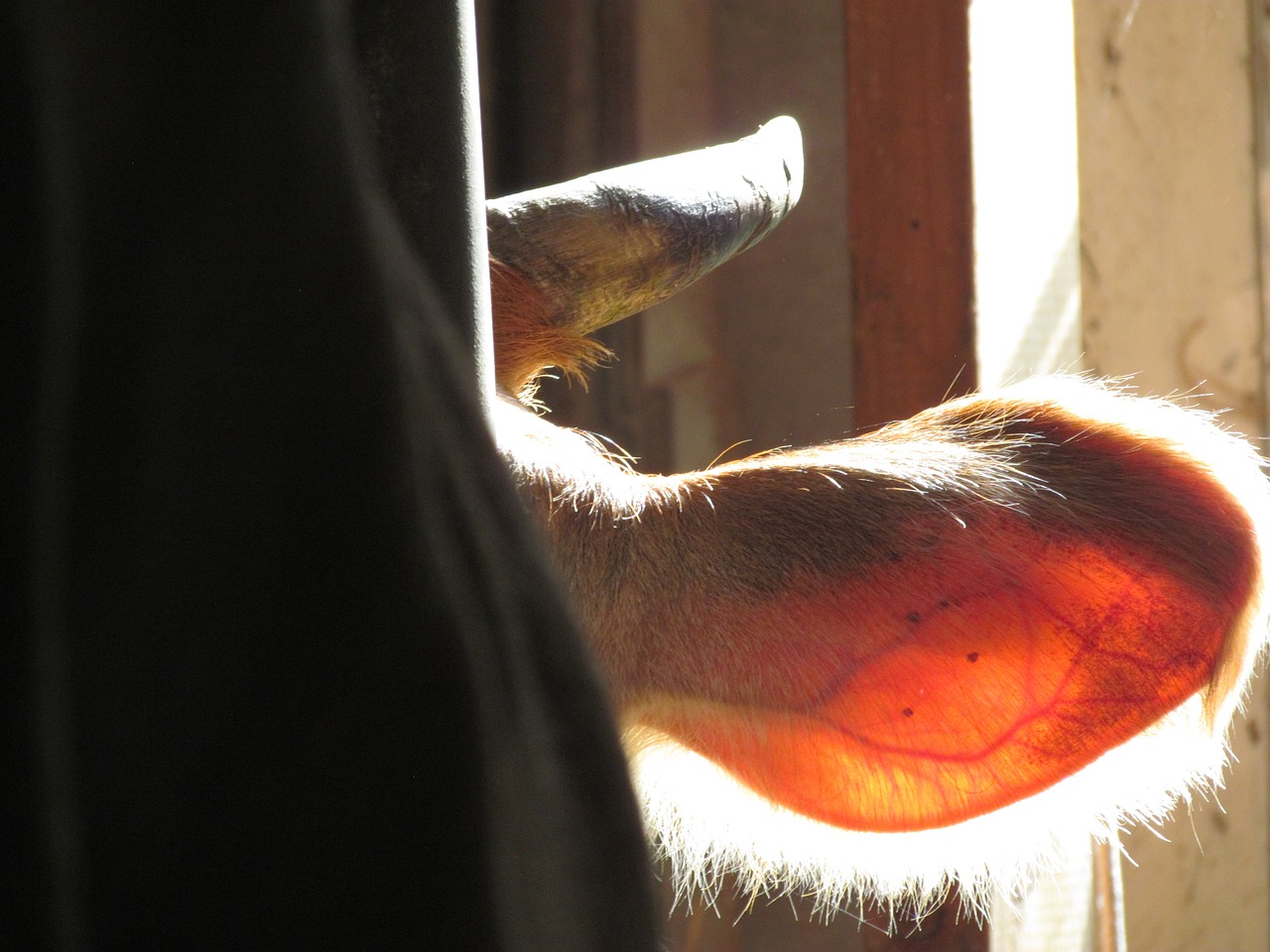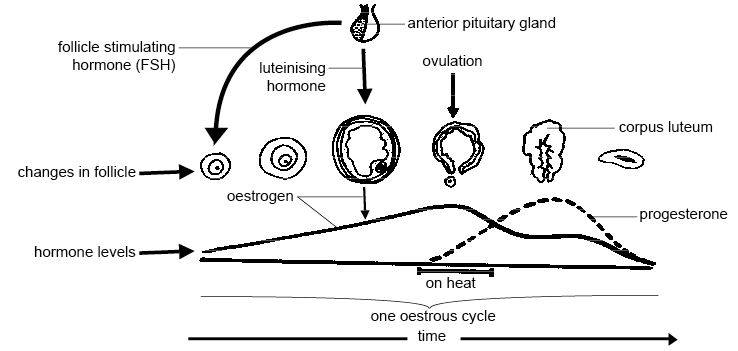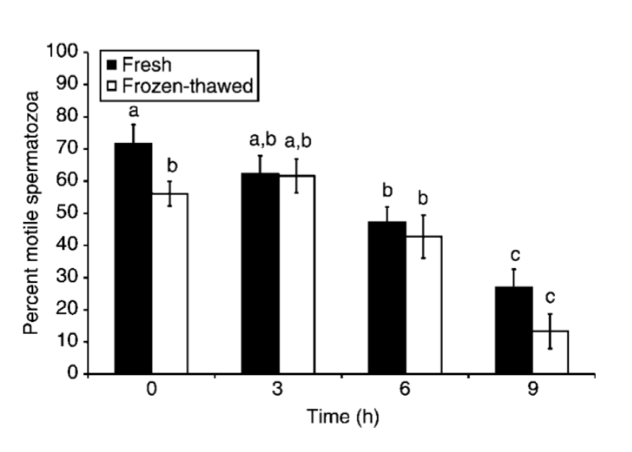Different endocrinological aspects of mammalian reproduction
Contents
-
Different endocrinological aspects of mammalian reproduction
- Introduction of Endocrinological reproduction
- Part I - Temporary and definitive inhibition of the secretion of sexual hormones in the bitch : contraception and sterilization
- Part II – The role of endocrinology in animal production : the dairy cow
- Part III - The reproduction system and the relation with the endocrinological part in the panda (Ailuropoda melanoleuca)
- Conclusion
- References:
Introduction of Endocrinological reproduction
Reproduction, by definition, is the biological process by which new individual organisms (« offspring ») are produced from their parents by combining the genetic material of 2 organisms (Wikipedia). Reproduction is one of the three primary needs of mammalian survival and has a role in supporting evolution. The neuroendocrine center, located in the Hypothalamus, acts as the major regulatory center of reproductive processes by mean of the action of hypothalamic GnRH cells that are going to stimulate all the hormones necessary to the control of reproduction. In the mammalian female, those hormones function by mean of a cycle which can be very different depending of species. Endocrinological regulation is a need in reproduction as it controls sexual maturity, normal sexual cycles, pregnancy, parturition and stability of the whole sexual mechanism.
|
How can Endocrinology affect or improve Reproduction in some mammalian species ?
Part I - Temporary and definitive inhibition of the secretion of sexual hormones in the bitch : contraception and sterilization
The reproductive cycle of bitches is different from that of women. Bitches undergo oestrus cycling from one to three times every 12 months. Mating and hence pregancy occur during oestrus. Infrequently, various factors such as ill health, can act to delay or suspend oestrus cycling. Unlike women, bitches do not experience a menaupose and usually continue to have seasons throughout life. Today they are numerous technics to avoid unwanted litters, but also behavioral and morphological changes characteristics to estrus.
1)Sterilization:
Sterilisation is the use of different medical techniques that intentionally supress the reproductive capacities of an animal/person and which is then unable to reproduce. It is a method of birth control. Sterilization methods include both surgical and non-surgical, and exist for both males and females. Sterilization procedures are intended to be permanent. The main reason, and the reason why all canine and feline welfare groups recommend sterilization for bitches, is to be able to have control over the birth of unwanted litters and of wild canid populations.
Endocrinology of sterilization : Ovarian and pituitary function in dogs after hysterectomy
Domestic dogs are monoestrous and predominantly aseasonal breeders, with several months of anoestrus between active reproductive phases. Compared to other domestic animal species, luteal function is practically similar in pregnant and nonpregnant females, except that pregnant animals attain baseline concentrations of progesterone earlier owing to the immediate prepartum decline of this hormone.
A shortened luteal lifespan after hysterectomy was observed and a luteotrophic factor of uterine origin was postulated. Other observations chowed a decline in progesterone concentrations after hysterectomy in normal pregnant dogs, but not in dogs with pyometra or other pathological uterine contents and concluded that there was a luteotrophic factor of fetoplacental origin. Neverless, observations demonstrate that they are no changes in luteal function after hysterectomy of pregnant and nonpregnant dogs while a reduction of progesterone concentrations without a shortened luteal lifespan was report (Hoffmann et al. 1992).
Positive consequences : a commonly‐stated advantage of neutering bitches is a significant reduction in the risk of mammary tumours
An official justification for early neutering of bitches is that it protects against mammary neoplasia. However, many frequently cited references are over 40 years old. As part of a larger project to develop evidence-based guidelines for neutering bitches, the objectives of this study were to figure out the strength of evidence for the association between mammary tumours (of any histological type) and neutering, or age at neutering, and to estimate the degree, and confidence interval, of the effect of neutering, or age at neutering, on the frequency of mammary tumours (of any histological type) in bitches (Beauvais et al. 2012).
The effect of neutering on the risk of mammary tumours : Researchers on one hand (Schneider et all 1969) found a potent protective effect of neutering on the risk of malignant mammary tumours. Neverless, no confidence interval or P value was showed. On an other hand, researchers reported “some protective effect” of neutering on the risk of mammary tumours (benign and malignant combined) in beagles but concluded that the evidence was “inconsistent”. Finally, some found no signifcant (P>0·1) confirmation of an association between neutering and the proportion of mammary tumour submissions that were neoplastic. However, this was only generalisable to dogs from which mammary samples were submitted for histology.
The effect of age of neutering on the risk of mammary tumours : Researchers (Bruenger et al. 1994) reported a convincing association between the risk of malignant mammary tumours and neutering before first oestrous [“relative risk” (RR) 0·005], second oestrous (RR 0·08), and after second oestrous but before 2.5 years of age (RR 0·06), compared with entire dogs.
There is some evidence to submit that neutering bitches before the age of 2.5 years is associated with a noticeable reduction in the risk of malignant mammary tumours, and that this risk may be reduced further by neutering before the first oestrous. However, our study, which involved screening over 10,000 articles in any language but reviewed only the English literature in detail, underlined that the strength of this evidence was weak because of the paucity of published studies that adequately address this issue.
Negative consequences : The ovarian remnant syndrome in the Bitch
The ovarian remnant syndrome is the existence of functional ovarian tissue in a previously ovariohysterectomized bitch. It is a complication of ovariohysterectomy, and it is not a pathologic condition.
Bitches with ovarian remnant syndrome show signs of proestrus and estrus defined by vulvar swelling, bloody vaginal discharge, behavioral changes like flagging and standing, and attraction of male dogs. Some bitches show clinical pseudocyesis, occasionally in the absence of a previously observed estrus. The bitch may allow copulation during estrus but do not become pregnant. The estrous cycles usually present the normal periodicity for that species. There may be a delay of months to years after the ovariohysterectomy was performed before the estrous cycles reappear.
Use of hormone assays to verify the diagnosis of ovarian remnant syndrome: A logical way to verify the presence of functional ovarian cortex is to measure serum estrogen concentration. Estradiol assays are available at many human and veterinary laboratories. An estradiol concentration greater than 20 pg/mL (73 pmol/L) is considered confirmation of follicular activity in the dog (Melissa et al. 1991).
|
2)Contraception:
Endorcinology of contraception : Use of a GnRH analogue implant to produce reversible, long-term suppression of reproductive function of male and female domestic dogs
Repeated low-dose administration of a GnRH analogue is able of postponing oestrus in bitches and suppressing reproductive function in dogs. A new drug delivery formulation which could increase the practicality of this approach for the control of reproduction has been advanced.
Experience described on the bitches: The treatments expanded the length of the inter-oestrous interval at all doses and it was possible to postpone oestrus for periods of up to 27 months. Induced-oestrus was seen in all bitches treated during anoestrus, and during dioestrus when plasma progesterone was <5ng/ml, with the exception of two animals. Signs of pro-oestrus and oestrus were detected 4-8 days after implant placement in those bitches demonstrating induced oestrus. The treated pregnant bitches did not demonstrate an induced oestrus. At necropsy intact reproductive tracts were find and confirmed. Of the nine bitches mated at the first oestrus following recovery, six became pregnant. Of these, 2 were necropsied close to parturition and 4 gave birth to healthy litters. One litter was euthanased at birth, and 3 bitches raised healthy pups to weaning.
The figure 3 demonstrates the effect of plasma progesterone concentration at the direct time of implantation on the incidence of induced oestrus in individual bitches succeding implantation with 3, 6 or 12 mg deslorelin. Each bar represents an individual animal.
|
The study showed that single implant technology using deslorelin as a contraceptive agent perform a safe, long-term, reversible suppression of reproductive function in male and female dogs. The site of implantation did not demonstrate significant inflammation, acute or chronic (Trigg et al. 2001).
Positive consequences of the contraception:
Contraceptive agent could be applied to the control of domestic and wild canid populations and also captive wildlife. But also for certain owners of domestic dogs to avoid morphological and behavioral changes which can in some cases be annoying. For example the loss of blood but also of a vaginal fluid, containing pheromones that can excite the male. The female also induce typical estral behavior for the purpose of attracting the male and eliciting copulation. Those changes are more a problem for people living in a city center.
Negative consequences : Follicular cysts and prolonged oestrus in a female dog after administration of a deslorelin implant
The case underline that the use of deslorelin implants in bitches may not be completely free of negative side effects and interactions with other hormones.
The concentrations of FSH and LH reported one week after administration of deslorelin were lower than those in the case presented here (Reichler et al., 2006). Nevertheless, it is likely that down-regulation of GnRH receptors on gonadotrophic cells in the pituitary was complete.
Therefore the research beggined due to this suspicious down-regulation of GnRH receptors, thus hCG was adminitered instead of a short-acting GnRH analogue (Shille et al., 1984). The consequent increase in concentration of progesterone in serum indicated that the treatment with hCG provoked partial luteinisation of the granulosa cells of the cysts or receptive follicles, or it induced ovulation (de Gier et all, 2006). The treatments, however, didn’t suppress production of oestrogen over a longer period. The ongoing output of deslorelin possibly interacted with the treatment or induced recurrence of the high concentrations of oestradiol. It is still unclear if the treatment would have been successful without the ongoing effect of deslorelin. The cysts examined histologically possibly grew within the period between the last ultrasound (de Gier et al., 2006) and the ovariohysterectomy. Award the progesterone assay the corpus luteum identified was not hormonally active.
The emergence of pyometra may have been due to the treatment with hCG. The uterus was probably primed by high concentrations of oestrogen for several months. Raised concentrations of progesterone could have caused removal of local immune responses. The occurrence of pyometra in 2/15 bitches treated in dioestrus with deslorelin implants was observed (Volkmann et al., 2006). According to those authors the two cases may have been unrelated to the treatment as pyometra may develop spontaneously in any bitch (Arlt et al. 2011).
Based on the last informations many controls should be done on the female dogs before performing the treatment (ei : ultrasonographic, gynaecological examination…, ect). And the risk of side reactions seems to be higher in older female dogs, and dogs with apparent ovarian or uterine abnormalities.
Part II – The role of endocrinology in animal production : the dairy cow
Nowadays, the actual goals and roles of dairy farming is to produce more and more due to oppressing increase in population and demand. Heifers need to conceive earlier and get better production performances in average. To answer those actual questions, a perfect and well-managed knowledge of sexual endocrinological hormones is essential. This knowledge can be reinforced by the development of technologies such as Ultrasonography (monitoring follicular growth) and genomic technologies.
|
1) Effects of artificial endocrinology on early puberty and pregnancy in dairy heifers
Puberty is defined as « when ovulation is accompanied by visual signs of estrous and normal luteal function » and Pregnancy success as « correlated with percentage of heifers that reached puberty before or early in breeding season » (Perry, 2012) We also know that the optimal age for first conception in dairy cows is 2 years old ; and that can be apply by the control of the hypothalamic-pituitary axis.
Control of Puberty
Several measurements can be made in order to control puberty; blood hormone concentrations are used to determine the pubertal process and the formation of the CL (Corpus Luteum). At puberty, the cow experiences a decrease in negative feedback of estradiol on GnRH followed by an increase in LH level. That will enhance the follicular growth and result in peripubertal period helped by estradiol secretion. Some recent studies have also showned a correlation between body conditions and normal estrous cycles. Indeed, a normal estrous cycle can be influenced by the age, the BW (Body Weight), the breed and size. An interesting study has proven that Leptin, the hormone for energy expenditure, had a role in regulation of HT/HP axis (Hypothalamus-Pituitary axis). Leptin levels increase at the age of puberty, therefore increasing the total BW. « Heifers can be developed to 50 to 55% of mature body weight before breeding season ». Heifers with lower body weight (53%) were seen being cycling before the start of the breeding season in contrast to heifers with more important body weight (58%). (Perry, 2012). Indeed, we assumed that the best body conditions for heifers to cycle and get pregnant was between 55 to 65% BW. Heifers with 65% BW conceived earlier in general during the breeding season.
Synchronisation of estrous cycle and fertility
An other fabulous discovery was to improve the synchrony of estrous and fertility by controlling both the follicular development and the luteal regression. 2 methods were studied : one based on the control of the luteal function and the follicular waves to improve the pregnancy success and the other related to the hormonal induction of new follicular waves (Perry, 2012). One suitable method focuses on initiating ovulation or atresia in the dominant follicle in a way to generate a new follicular wave. The experiments have shown that Progesterone and Estradiol was the best combination to initiate a new follicular wave after 4 to 5 days after injection (Perry, 2012). Further results demonstrated that Progesterone and GnRH injections were negatively related. Indeed, P4 and E2 are important in LH release and the so called “Presynchronisation” that allows a perfect time for the oestrous to optimally respond to GnRH injection and therefore initiating of a new follicular wave. This will have a positive impact on fixed-time AI (Perry, 2012). That method can be reinforced by the so called “Ovsynch/TAI” (Ovulation-synchronized/Timed Artificial Insemination) protocol. The specificity of this protocol is that heifers can be inseminated at any stage of the oestrous cycle, meaning that no oestrous detection is realised before. A GnRH injection is given randomly during the oestrous cycle and that will initiate a new ovulation or luteinisation of large follicles necessary for the recruitment of new follicular waves (Moreira et al., 2000).
Fertility
Different factors can play a role in enhancing fertility. One would be the AFC (Antral Follicle Count). This is strongly correlated with pregnancy success: a decrease in AFC will enhance a decrease in P4 and LH receptors (Perry, 2012). AFC can also influence milk production and longevity because it promotes the optimal development of mammary gland tissue. An optimal AFC is situated between 23 and 24,5 months of age (Wathes et al., 2007). Some programs were tested to improve fertility, and that was the case of the so called “in utero” program, based on the relationship between maternal nutrition and some elementary factors such as growth, development and future reproductive performances in offspring. Studies demonstrated that cows restricted with food for the first 110 days of gestation had their calves with fewer AFC compared to the ones supplemented with rich nutrients that participated in increased conception rates (Perry, 2012).
2) Revue of endocrinological improvements on fertility and production in dairy cows : the role of AMH
First of all, we are going to focus on the Anti-Mullerian Hormone, a hormone similar to growth factor, part of the superfamily of the TGF (Transforming Growth Factor) and which is exclusively secreted by the granulosa cells of healthy follicles. We are going to demonstrate one study that have proven that AMH is positively related to AFC, ovarian function/ovary size, fertility, birth weight and superovulatory response. AFC, as a reminder, is known as « the average for the maximum number of antral follicles superior to 3 mm in diameter during each of the 2 or 3 consecutive follicular waves during an estrous cycle » (Jimenez-Krassel et al., 2015).
AMH relationship with productive herd life
Initiation of experiment : Heifers with low AMH levels are more likely to have suboptimal fertility, poor reproductive performances leading to a shorter productive herd life and are most of the case removed from the herd.
Method of experiment : 281 heifers aged between 11 and 15 months old were tested by single measurement of AMH levels (blood prelevements on coccygeal vein). PGF2α injection was performed previous to the experiment in order to synchronize the estrous cycle. The heifers had to complete 2 lactations and a third one after calving. Different measures of performance and health parameters were also completed here. Both the level of AMH and the size of the ovarian reserve were measured. We applied AI the following day after « standing estrous » until successful pregnancy was diagnosed. To better interpret the results, we used quartiles (Q1, Q2, Q3, Q4) that correspond to the different levels of AMH : Q1 for lowest AMH concentrations and Q4 for the higest ones (Jimenez-Krassel et al., 2015).
Results : Heifers in the first quartile had shorter productive herd life, reduced survival rate after birth of the first calf, lowest milk production levels, lowest percentage of pregnancy and that quartile contained the highest percentage of culled heifers.
Conclusion: By simple determination of AMH levels a diagnosis can be made to anticipate the future productive herd life of dairy cows and their tendency to produce better and in a longer period. “AMH can be a useful phenotypic marker to improve longevity of dairy cows” (Jimenez-Krassel et al., 2015). Furthermore, we can better understand the mechanisms contributing to the relation between AMH, fertility, level of milk production, longevity, etc.
3) Effects of environmental heat stress on reproductive performances in dairy cows
By definition, stress is the “condition where there is undue demand for physical and mental energy due to excessive and adversive environmental factors and cause deformations those are identifiable through physiological desequilibrium” (Ahmed et al. 2015). Nowadays, Heat Stress (HS) is considered as a major economical and environmental issue and might lead to economical losses mostly in tropical and some temperate regions, consequences of the climate change that sees its temperatures increasing by 0,2°C in average per decade (Ramendra et al., 2016) The comfort of the dairy cow can be evaluated using the so called term “comfort zone” where energy expenditure of the cow is at its minimum and may be influenced by its age, breed, diet and feed intake. We say that the animal is in HS when it is outside of its comfort zone. The normal body temperature of the cow is between 38,4 and 39,1, its thermoneutral zone ranges from 16 to 25°C. Above an outside temperature of 20-25°C we can say that the cow experiences heat gain which will later result in HS (Ramendra et al., 2016).
|
HS is the cause of several reproductive functions
This table summarises the different effects that HS can cause on reproduction and show how much reproductive functions can be altered by its effect. HS in a general way suppresses endocrinology and immunity of the animal.
Reproductive function |
Effects of climatic stress on associated physiological functions |
Pubertal development and Estrous Induction |
↘ length + intensity of estrous; ↘ Follicle selection; ↗ Follicular wave length; ↘ Oocyte quality; ↘ LH + E2 synthesis --> blocking of E2-induced sex behaviors |
Hypothalamus/Pituitary Ovarian Axis |
General desynchronisation GnRH secretion ↘ leading to E2 secretion ↘ --> HS effect is then increased PRL is heat sensitive, ↗ levels in summer period --> Anti-GnRH action; ↗ ACTH and Cortisol production |
Fertility / Conception |
↘ Fertility rates (both summer and fall seasons); ↗ PRL --> Acyclia! and infertility |
Embryonic development |
↗ embryo losses (most of the case the consequence of maternal HS) Biggest losses around first 2 weeks of pregnancy 40 to 60 days are necessary after HS for fertility to come back to normal state (undamaged ova ovulated); ↗ Fetal abortions --> embryo death (oxidative cell damage) |
Oocyte performances |
↘ Follicular development --> ↘ steroid hormone production + follicular growth --> Incomplete dominance of selected follicle; ↘ Decrease competence of oocytes |
Table 1 – Effects of Heat Stress on sexual reproductive functions
Milk production is decreased
Indeed, dairy cows need to have a very efficient and high level metabolism that help them to produce larger quantity of milk every day. When milk production becomes intensive, for example at the lactation peak (4 weeks), heat metabolism is present and heat stress is induced, having strong negative impacts on milk synthesis. Therefore dairy cows are more sensitive and fragile to HS as milk production is getting bigger and bigger. According to some deeper studies, the mechanism is the following: HS influences the activation of “stress response systems in lactating cows” (Ramendra et al., 2016) that will have a negative effect on feed intake. By decreased of food intake, milk production will be lower, such as the DMI (Dry Matter Intake) that can be decreased by 0,85 kg every 1°C rise in temperature, inducing up to 36% decrease in milk production (Ramendra et al., 2016).
Solutions and answers to Heat Stress
One of the most known solutions to elevate summer fertility management is the introduction of Artificial Insemination (AI). This program, described earlier, does not need any estrous detection but does not act against the effects of climatic temperatures. Finally the most accurate and simple method to fight HS is the cooling method that can both increase reproductive performances and milk production.
|
Part III - The reproduction system and the relation with the endocrinological part in the panda (Ailuropoda melanoleuca)
The panda is an animal who lives in the tropical and damp area, around the mountain of China and the Tibet. The wild panda is a very discreet animal. Nowadays, they count only 1750 pandas. The deforestation and the exploitation of the bambou are taking a real part in their disparition but also fur-poaching. That’s why the reproduction of the panda became a real goal for the association of the animal protection like World Wild Foundation for sustaining the population. But considered like a « rare species » the reproduction of the panda is not that easy. In this research, we will clarify panda reproduction and understand how it works, in relation also with the endocrinological part.
1)The general part of the reproduction of the female panda, general characteristic
Researchers have found that lots of males compete for each female during mating and breeding season. The dominant male can mate with a female lots of times for giving chance to a new pregnancy of younger pandas. It helps for each fertile female to become pregnant. Wild giant pandas usually give birth every two years for about 15 years. Giant pandas reach sexual maturity at 5.5 to 6.5 years. The mating season is in spring between March and May and gestation takes from 95 to 160 days. The female giant panda has a single estrous cycle once a year in spring for 2 to 7 of those days. And only fertile for 24 to 36 hours. This short period indicates such a tough challenge for sustaining the population.
Estrous cycle and hormonal part; ovulation and pregnancy :
In this experiment, data is collected by females between 5 to 7 years during the three mating seasons of 1997–1999. Showing a high degree of regularity in both estrogen and the behaviors when using artificial insemination gives the confirmation of the time of the ovulation of the panda occurring right after a peak in estrogen values present in urine (Lindburg, 2001). The female panda produces a single estrogen peak during the spring mating seasons (three successive years) on April 24, April 9, and April 9. The normal value is <50 ng/mg Cr of estrogen begin around day –11 and the peak is just >600 ng/mg Cr, following by a decrease precipitously to the normal value on the next 2 days. (lindburg 2001) The pregnancy via artificial insemination on the days 1, 2, 3 in the three seasons accept the hypothesis that the period after day 0 is the period when ovulation occurs. But it is not so precise for identify the temporal connexion between the release of the ovum and descending ostrogen values (Lindburg et al., 2001).
In another expriment, measures of urinary estrogen and progesterone during oestrus and pregnancy in panda were taken. Urinary estrogen were more present and excreted during oestrus and was identified as estrone glucuronide which can be calculated directly or with estrone after hydrolysis and extraction (Kleiman et al., 2009). Ovulation can be shown by a rapid increase of estrone, which will be held on the onset of oestrus between two to four days. More precise timing for the ovulation, necessary timing mating or artificial insemination, can be demonstrated by monitoring the subsequent decrease in estrone excretion. A direct assay for estrone-3-glucuronide which can be done within two to three hours, gives the most practical and fast method to seek ovulation in the Giant panda (Kleiman et al., 2009).
|
Baby giant pandas are born in an extremely critical state, babies are blind, toothless, and only sparsely covered with white fur. They are less formed and have a litter size ranges from one to two, captive females are reported to rear only a single young. Infant giant pandas walk and move poorly until four months of age and can be weaned in captivity by 6 months of age when they grow up and take 13kg around. A giant panda of one year old and who has only an average of 36 kg or about a third of an adult weight has a good health (Kleiman, 2010).
2)Hormonal part of the reproductive system in the female panda, the way to understand and improve the reproduction
The estrogen discharges were measured in 10 females via different immunological way: -six of them by enzyme immunoassay (EIA) of the estrone glucuronide analysis -four of them by the method of the radioimmunoassay (RIA) of the estrone sulfate analysis
These results will be compared with the two different immunological ways. The measurement of data will be based on the urinary estrogen excretion profiles in four pandas and who the reproduction is well successful because it takes place after the days of insemination. The research of urinary progestins and also to estrogens, can be put in relation with the monitoring of reproduction in the giant panda. It can help in the exposure of the development of a corpus luteum who will produce the ovulation, and as a monitor for gestational changes. In this research we will seen the progestin dynamics surrounding ovulation in six pandas, make a conclusion of hormone excretion in the six giant pandas that we studied to date (Czekala et al 2003).
Also we will show how the endocrine data can be taken as a specific place to enhance animal management and maximize reproductive success. Urine was taken up every day as conditions allowed, since it was not possible to collect from all animals each day. A needle was used to take the urine from the cage floor, and once collected it was placed in labeled cryo tubes for storage. Urine was stored in a cold place until analysis. All hormone concentrations are indexed by creatinine (Cr) in order to adjust for variability in the urine dilution from sample to sample. Results are expressed as mass/mg Cr (Czekala et al., 2003).
Immunoessay techniques: Estrogens ( RIA/ ELISA/ EIA) HPLC (urine sample with peak of estrogen concentration ) Progestins ( The measurement of the pregnanediol-3-glucuronic by EIA, and peak of estrogen concentration need for find the good timing go the ovulation).
The time of ovulation and the estrous was detected with the RIA and ELISA immunological assay thats to the urinary estrogen. The results of estrogen secretion for the two methods were practically the same. Between the day 0 and the day 10, the urinary estrogen began to increase, meaning the ovarian follicle become mature, the process starts.
For the group of the six panda the EIA is used for monitor the estrous, the results are:
- a.-6 ng/mg CR/ day -14 to -12
- b.-6-15 ng/mg CR/ day -11 to -7
- -And after a huge peak of CR concentration at day 0
For the group of the female analysis with RIA: Urinary estrogen:
- a.-o40ng/mg Cr/ day -25 to -14
- b.-40-50 ng/mg Cr/ day -13 to -10
Continued with a elevated peak of concentration at the day -9 until day 0.
The results of a comparison of the time of peak estrogen excretion with the days of insemination, by natural mating or AI, in females that gave that the results of estrogen levels in all groups of females except on female was completed after mating and AI. The works of the urinary estrogens, or also by urinary estrone glucuronide or estrone sulfate, is a really good aid of monitoring impending ovulation, and can be served as a timing tool for mating introductions and AI. The calculations informed that there is an approximately 10-day arrangement of gradually increasing estrogen excretion and follow the pre-ovulatory estrogen peak and which is proceed by a rapid decline to the base of the data (Czekala et al 2003).
The rising of progesterone metabolite excretion leads to an ovulation in the giant panda, however, the present works and research are using an antiserum with a broader spectrum of cross reactivity than that previously studies. Here, the progestin concentrations of the day 7 post-estrogen peak were four times the base of the concentration data. Progestin analysis, can be used like a way to show that ovulation has occurred following the dropping of estrogens (Czekala et al 2003).
3)Overview of the reproduction: the male giant panda
The reproduction of giant pandas is a real goal and particularly males. Because, with experiences we demonstrate that males have low libido and/or aggressive behaviors toward females. The increase of the genetic heterozygosity in the ex situ population of 120 giant pandas in China permitted the potential reproduction in the future, but, it is essential that all the panda can be in good condition for breed. Artificial insemination of fresh semen takes a real place in the role of the reproduction of giant pandas in captivity, including aid to regulate the problem of sexual incompatibility (Spindler et al 2004).
Almost all the AI are successfully complete and have occurred with fresh spermatozoa method, the genetic engineering of giant pandas in captivity is made out as the one of the first priorities for ex situ conservation action in China. The ability to every time making new offspring by the methods like cryopreserved sperm would permit to extend the sperm viability from days to years and even generations. (Spindler et al 2004).
This significantly increases the predicted survival of panda. So, the effective sperm cryopreservation in theory can allow securing robust genetic material of wild giant pandas which are captured for brief periods. Sperm from these pandas can be taken in consideration of ‘insurance’ for the gene pool, with aliquots used periodically to infuse heterozygosity into the ex situ population. This would eliminate the need to over extract more giant pandas from native habitats to support zoos. Functional viability of a spermatozoon generally depends on sperm progressive motility, acrosome integrity and the ability to undergo capacitation, the acrosome reaction and decondensation. Capacitation is the terminal stage of sperm maturation and is needed for the acrosome reaction and subsequent zona pellucida (ZP) penetration and oocyte fertilisation (Spindler et al 2004).
The work will be held of series of investigations to determine the influence of seminal processing and cryopreservation/thawing on giant panda sperm function. Here, we will study on the phenomenon of sperm capacitation in vitro. Spermatozoa of some species can make capacitation spontaneously in vitro, whereas others require accelerators such as 3-isobutyl-1-methylxanthine or dibutyryl cyclic AMP (dbcAMP). At the end, the goal is to find the dynamics of giant panda sperm capacitation in the presence and absence of IBMX and dbcAMP. Cryopreservation is also seen to block the sperm function via damaged acrosomal membranes. And in a second way to determine if the freeze–thawing induced membrane damage is reducing the ability of giant panda sperm to get acrosome reaction (Spindler et al 2004).
Results:
The spermatozoa of the Giant panda were capable of capacitating in vitro over a 6-h interval of incubation with or without the use of the accelerators IBMX and dbcAMP. Plus, a little loss of cellular motility post-thawing appear, the methods described here followed the freeze–thawing of giant panda sperm without compromising acrosomal integrity. The ursid and felid zonae emulsions help the acrosome reaction in giant panda spermatozoa, supporting data who shown that the triggers to this phenomenon are not species specific. But, the methods utilised here for freeze–thawing these cells did not compromise the ability of giant panda sperm to undergo capacitation. To permit a successful fertilisation, this research indicated the importance of sperm motility and acrosome integrity, the discovery of a high level of motile, and acrosome-intact sperm after cryopreservation. Results were promising, but still not enough for normal fertilisation. This incidence of damaged acrosomes found in thawed, CHF10-incubated and also control sperm over time could be explained by contact with other sperm or the plastic incubation tube around thawing process. Spermatozoa can be damaged or premature ‘capacitation-like’ changes can happen during freeze– thawing, or exposure to medium which have accelerators. Alternatively, these sperm labelled damaged can be practically capacitated sperm (Spindler et al 2004).
|
Conclusion
Based on our researches and facts about the reproduction in three different species, we have proven that Endocrinology, in many different aspects, has a very important role in enhancing, maintaining and regulating Reproduction in mammals. Indeed, it allows a precise and strong control of reproduction in pets. By knowing the different aspects of endocrinology we can apply treatments and drugs that can have a control on the reproduction, this is the case for the contraception in dogs and cats. Then, Endocrinology is an essential factor to take in account regarding Dairy industry. Coordinated with precise timing, temperature and factors related to the conditions of animals, it can improve fertility, longevity, milk production and general functions of dairy cows, then improving production and economy. Finally, it is an absolute need in the actual and developing environmental goals and projects, thus it contributes to the preservation of rare and endangered species as it is the case for the panda which can only be fertilised in a few hours per year (Spindler et al 2004).
References:
- Ahmed A, Tiwari A R P, Mishra G K, Biswadeep J, Munner A D and Bhat (2015) - An Effect of Environmental Heat Stress on Reproduction Performance of Dairy Cows, A Review - International Journal of Livestock Research – 5(4):10-18.
- Arlt S P, Spankowsky S, Heuwieser W (2011) - Follicular cysts and prolonged oestrus in a female dog after administration of a deslorelin implant - New Zealand Veterinary Journal – 59(2):87-91.
- Beauvais W, Cardwell J M, Brodbelt D C (2012) - The effect of neutering on the risk of mammary tumours in dogs, a systematic review - Journal of small Animal Practice - 53:314-322.
- Bruenger F W, Lloyd R D, Miller S C, Taylor G N, Angus W, Huth DA (1994) – Occurrence of mammary tumors in beagles given radium-226 - U.S. National Library of Medecine - 138(3):423-34.
Czekala N M, Steinman K, McGeehan L, Xuebing L, Gual-Sil F (2003) - Endocrine Monitoring and its Application to the Management of the Giant Panda - Zoo Biology - 22:389-400.
- Kleiman D (2010) - Ethology and Reproduction of Captive Giant Pandas - Ethology - 62(1):1-46.
- Hoffmann B, Hoverer R, Hasan S H and Failing K (1992) - Ovarian and pituitary function in dogs after hysterectomy - Journal of reprodution and fertility - 96:837-845.
- Jimenez-Krassel F, Scheetz D M, Neude M, Ireland J L H, Pursley J R, Smith G W and Ireland J J (2015) - Concentration of anti-Müllerian hormone in dairy heifers is positively associated with productive herd life - American Dairy Science Association - 98:3036–3045.
- Kleiman D, Hodges J K, Bevanm J, Celma J, Hearnd P, Jones M, Knight A and Moore H D M (2009) - Aspects of the reproductive endocrinology of the female Giant panda (Ailuropodu melunoleacu) in captivity with special reference to the detection of ovulation and pregnancy – Journal of Zoology - 203:253-267.
- Lindburg D G, Czekala N M, Swaisgood R R (2001) - Hormonal and Behavioral Relationships During Estrus in the Giant Panda: Giant Panda reproductive cycles - Zoo Biology - 20:537-543.
- Melissa S, Wallace D V M (1991) - The ovarian remnant syndrome in the Bitch Canine Reproduction - 21(3):501-507.
- Moreira F, de la Sota R L, Diaz T, and Thatcher W W (2000) - Effect of day of the estrous cycle at the initiation of a timed artificial insemination protocol on reproductive responses in dairy heifers - American Society of Animal Science - 78:1568-1576.
- Perry G A (2012) - PHYSIOLOGY AND ENDOCRINOLOGY SYMPOSIUM - Harnessing basic knowledge of factors controlling puberty to improve synchronization of estrus and fertility in heifers - American Society of Animal Science - 90(4):1172-1182.
- Ramendra D, Lalrengpuii S, Nishant V, Bharti P, Saikia J, Kumar I R (2016) - Impact of heat stress on health and performance of dairy animals: A review - Veterinary World - 9(3):260-268.
- Schneider R, Dorn R, Taylor D O N (1969) - Factors Influencing Canine Mammary Cancer Development and Postsurgical Survival - Journal of the National Cancer Institute - 43(6) :1249-1261.
- Spindler R E, Huang Y, Howard J G, Wang P, Zhang H, Zhang G and Wildt D E (2004) - Acrosomal integrity and capacitation are not influenced by sperm cryopreservation in the giant panda, Reproduction - 127:547-556.
Trigg T E, Wright P J, Armour A F, Williamson P E, Junaidi A, Martin G.B, Doyle A G, Walsh J (2001) - Long term reversible desexing of male dogs and oestrus postponement of bitches, using a GnRH analogue implant. In: Advances in reproduction in dogs, cats and exotic carnivores - Journal of Reproduction & Fertility, Supplement - 57:255-261.

